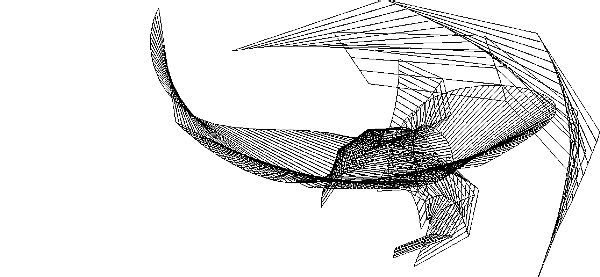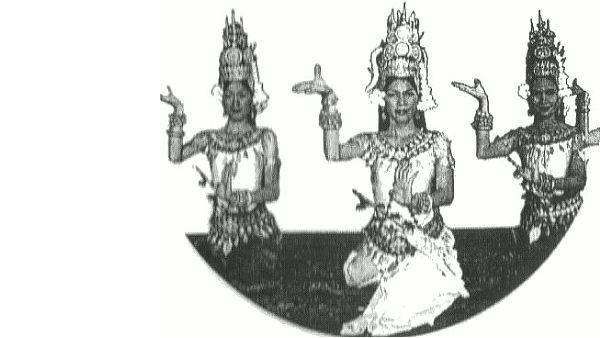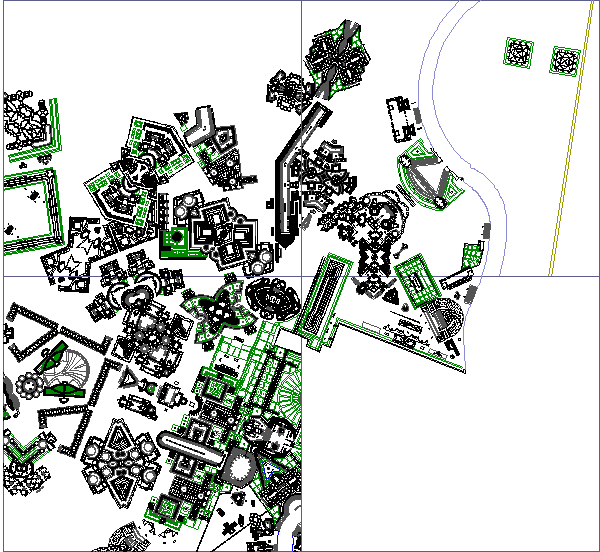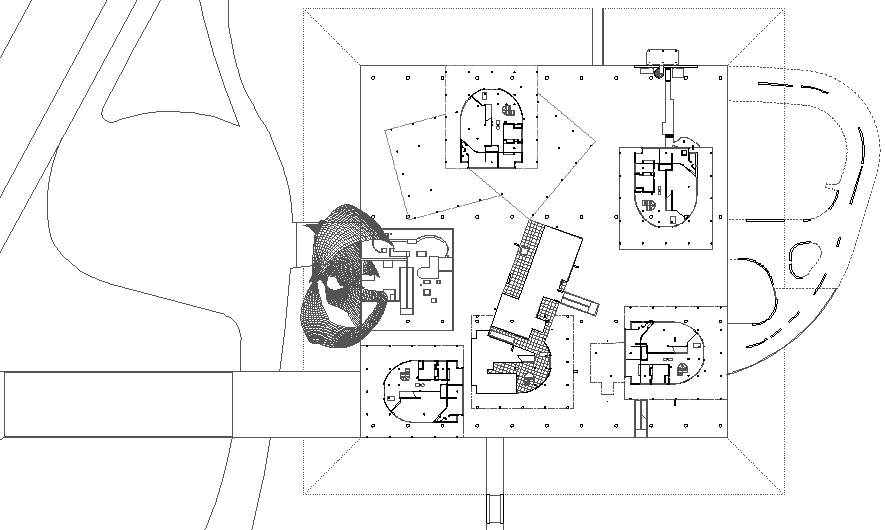1998
...Rossi and the Cemetery of Modena and hence lift the "mask" once and for all (because the cemetery is also a reenactment).
The third point (perhaps final) will be to address Piranesi's own mistakes and inversions, particularly the inversion of the Circus Flaminius (which I now know to be also exchanged in location with the theater of Balba, which further shows Piranesi's intentional "mistakes" to make a specific point). I will make the point that Piranesi makes the mistakes, first to call attention to specific points, and second to highlight the notion of inversion. Piranesi is indeed being theatrical, which is only natural because of the whole notion of reenactment. I will at this point discuss the Ichnographia's Triumphal Way and how Piranesi redesigns (reenacts) the Way making it more ideal to its purpose (marching through the theater district). This will be a condensed version of the full Triumphal Way story. I will show how it (on the Ichnographia at least) ends at the Temple of Janus--a perfect example of inversion--and then demonstrate how following the Triumphal Way in reverse manifests the Christian theme of salvation and redemption, ending at the inverted "basilica"--the upside-down "inverted" crucifixion of St. Peter. At this point I can proclaim that the Ichnographia not only represents the history of ancient pagan city of Rome, but also the Christian city of Rome. This brings in Augustine's The City of God and also Bloomer's notion of the Ichnographia transcending time.
I can conclude with the Scenographia as the stage upon which Piranesi reenacts--this is the first scene and the "play" is about to begin. In the course of the "play" the most egregious "mistake/inversion" is the misplacement and disorientation of the Circus Flaminius and its actual exchange with the Theater of Balba. This "mistake" manifests a composition of inverted theaters--essentially a double inverted theater. This configuration becomes one of the Campo Marzio's final scenes and thus represents the double inverted "theater" of Rome's own history--the narrative of pagan Rome and the narrative of Christian Rome, and in the Ichnographia the one story is indeed a reflection of the other.
"The Key Plan"... ...about the tiny unnamed intercourse building at the end of the axis of life.
...unlocking secrets, gaining access to knowledge.
...the plan as depicting conception, and therefore the intentional starting point for meaning (and hence interpretation as well).
...the symbolism regarding the conception of Romulus and Remus--Mars and the royal Vestal Virgin as the parents.
...the tiny plan as the generator of all the subsequent plans; the beginning of the "embryonic development" of all the other plan formations.
...the signifying effect of inside vs. outside and of solid vs. void.
...the irony that Bloomer's key plan is just across the river and the unfortunate non-starter nature of her interpretation and underworld scenario.
...the connection to the The City of God regarding the fratricide of Romulus towards Remus and its parallel to Cain and Abel.
...bring up Vico and Collingwood and thus raise again the questionable validity of "reconstruction" as opposed to reenactment.
2002
I guess what really makes me so happy today is that I now know (for sure) that the place I often played as a child was once, and probably for many centuries, a Delaware or Lenepe campsite.
2004
Remember how (according to the book, not the movie, The Wizard of Oz) the citizens of Emerald City were all required to wear green tinted spectacles? Maybe all architects should be required to wear 3D glasses, because maybe then there will be more classic movies about architects. Yes, that's it! The whole world should have to wear 3D glasses, and that way everything will always be seen in 3D, and then there will be great peace in the lands because no one will ever again argue whether any architecture is good or not. Oh my goodness, this is genius! All we have to do is design eye glasses that, when worn (under penalty of law), make the wearer see the world only the way they want to see it. Imagine a world that looks exactly the way you want it to look! Actually, Imagine a world that looks exactly the way everyone wants the world to look. That's it! That's all I'm gonna do from now on--work on inventing these glasses.
2006
Bad Hair Day Architecture

Yeah, reality bites.
Venus Fly Trap Architecture

Gosh, reality really bites.
These are just two examples of how Quondam can help your architecture in today's chaotic world. Do you have ultra-original architecture that no one can easily understand? Then don't worry! Quondam can look at your project and within minutes provide you with the right visual formula to present your great design to the world.
2007
Client: "Well then, can you design me an architecture that is regional and relates to fashion."
Architect: "Of course, Madam. It will look something like this...

"In the future, everyone will be a starchitect for fifteen minutes."
2009

| |
2013


Kahn's is indeed a new objectivity. The kind of objectivity that presents with detachment the terms of a problem difficult to solve, lining them up in an abstract series: the high didactic quality of Kahn's architecture--or, rather, of his designs and methods, more than of his, often disappointing realizations--is in the ability of making objective and verifiable the path that leads to architectural communication, throughout its complex structures. We can say, therefore, that for Kahn too, history is only an ingredient to be manipulated. He uses it to justify choices already made or to shed semantic light, through the open allusion of the references, on values that aspire towards the symbol and the institution, but that, at the same time, try to be open and readable without betraying the code that rejects myths, symbols and permanent institutions.
The critical activity of Kahn's work is not, then, directed toward the historical material, but toward the manipulation of its forms carried out by the less advanced groups of the Modern Movement. With all this we mean to say that Kahn is not more advanced, but, in fact, lagging behind someone like Le Corbusier, for example, at least as far as the methods of dealing with the form go, even if Kahn is perhaps more up-to-date than the Swiss-French master because of his combinatory analysis of composition materials, that answers to a particularly contemporary felt need for verifiability. The fast that the Kahnian rigorist school, with the exception of some work by Giurgola, Vreeland, Kallmann, Knowles and McKinnell and of the latest Pei, falls into an uncontrolled praise of the 'Master's' criticism, is something else altogether.
It is significant, though, that the analytical method of these rigorists (at least before it too became a consumer phenomenon) was found proactive by American and international circles. The historicism of the Kahnian school harks back to the European myth of Reason: as such it becomes a phenomenon opposed to the pragmatist American tradition, balanced, by now, between a fun-fair irrationality and a guilty cynicism.
How much can we accept, then, of Robin Middleton's statement that Gropius's negation of history serves, now, only as a pretext for an architectural game? Middleton writes about Rudolph, Kahn and Johnson:
Historical study had not served to enlarge their perceptions or strengthen their powers, it had prompted them to make a number of adaptations of the most limited and limiting kind. They are composing with fragmentary rubbish. It would seem that they are no longer prepared to accept engagement in the architectural struggle. They have turned it down. But are they daunted or dismayed? Not at all. Flourishing. It seems almost mean-minded and petulant to cavil at their success.
|